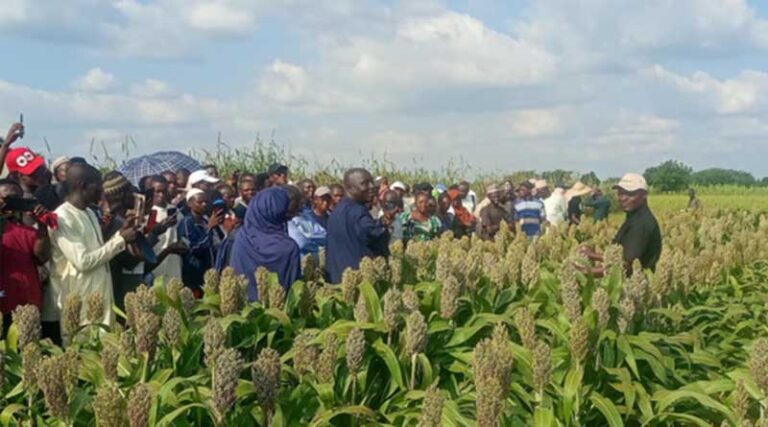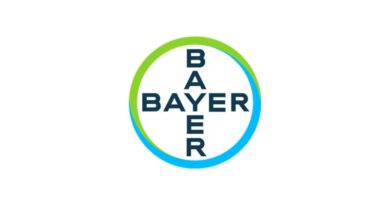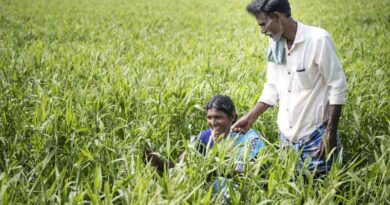
Small Stature, Big Impact: How SAMSORG 52 is Redefining Sorghum Farming in Nigeria
21 November 2025, Nigeria: ICRISAT’s short-duration sorghum variety, SAMSORG 52, is transforming farming in northern Nigeria by addressing insecurity, strengthening productivity, and improving nutrition.
Sorghum is more than a crop in northern Nigeria – it is a lifeline. Millions of households depend on it daily for food, livestock feed, income, and cultural practices. But in recent years, farmers have faced unprecedented challenges. Insecurity from banditry and insurgency has made cultivating tall sorghum risky, while drought and erratic rainfall continue to reduce yields.
To tackle these constraints, scientists at the International Crops Research Institute for the Semi-Arid Tropics (ICRISAT), in partnership with HarvestPlus (hosted by the International Food Policy Research Institute – IFPRI), the Institute for Agricultural Research (IAR), Samaru, and other national collaborators, developed a variety tailored for safety, resilience, and nutrition.
From Research to Fields
SAMSORG 52 (formerly 12KNICSV-297, “Yar Gwuiwa”) was released in 2023 after years of multilocation testing and extensive farmer evaluations. Developed from a cross between Zabuwa and Grinkan-7-3-1, this open-pollinated variety combines resilience, nutrition, and farmer-preferred traits in a compact, easy-to-manage form.
It is well adapted to the Sahel and Sudan savannas, where short and erratic rainfall is common. Its short plant height (≤1 m), compact elliptic panicles, and white seeds make it distinctive and practical for farmers.
Early and Productive
One of SAMSORG 52’s most valuable traits is its earliness. It matures in 85–90 days, enabling farmers to harvest before terminal drought. With a potential yield of 3.7 t/ha, it surpasses many traditional varieties while reducing the risk of crop failure.
Farmers also benefit from its tolerance to Striga and sorghum long smut, two major constraints in sorghum production. Its strong tillering ability further enhances yield stability.
Nutrition for Healthier Families
SAMSORG 52 is a dual-purpose biofortified sorghum, developed to contribute to both food and nutrition security, while its stover is very suitable for livestock feed.
It contains:
- Iron: 55 ppm
- Zinc: 27.8 ppm
- Protein: 10.25%
- Carbohydrate: 83.64%
These nutrient levels help combat iron deficiency and hidden hunger—particularly among women and children. Its high iron content makes it ideal for baby-weaning foods and healthier household diets.
Smart Security Visibility
In Nigeria’s northeast, where farming has been disrupted by insurgency, tall crops can obstruct visibility and heighten danger. SAMSORG 52, at less than one meter tall, offers smart security visibility –a low-growing crop that farmers can cultivate safely without creating hiding places in the field.
This unique advantage has made SAMSORG 52 widely acceptable in communities where tall sorghum varieties have been discouraged or banned by security agencies.
Mechanization Made Easy
As Nigeria moves toward modernizing agriculture, SAMSORG 52 offers strong mechanization advantages.
Its short, uniform height and synchronous maturity make it suitable for combine harvesting, reducing labour costs, postharvest losses, and drudgery. This also makes sorghum farming more attractive for youth.
Where It Works
Known locally as “Yar guiwa,” SAMSORG 52 is well adapted to sorghum-producing states including Kano, Jigawa, Sokoto, Kebbi, Bauchi, Gombe, Yobe, Borno, and Katsina.
Its short canopy allows efficient intercropping with millet, maize, and cowpea, making it suitable for diversified dryland farming systems.
Impact on Farmers
Adoption studies and participatory trials show significant benefits when SAMSORG 52 is combined with good agronomic practices:
- 56–102% yield gains compared to tall local varieties
- 82–88% increase in net revenue
- Improved household nutrition due to higher iron and zinc content
Beyond numbers, SAMSORG 52 has restored confidence among farming communities. Farmers can now grow sorghum without fear of concealment risks or confrontation with security forces.
Trade-Offs: SAMSORG 52 vs. Traditional Tall Sorghum
Comparing SAMSORG 52 (dwarf, early maturing) with tall, late-maturing sorghum reveals important differences:
- Water Use: SAMSORG 52’s short cycle requires less cumulative water and performs reliably under erratic rainfall. Tall varieties need more water but excel in years with long, well-distributed rains.
- Yield Balance: SAMSORG 52 delivers stable yields of 3.4–3.7 t/ha even in stress-prone environments. Tall varieties can exceed these yields only in wetter years but are highly vulnerable to late-season drought.
- Grain vs. Biomass: SAMSORG 52 prioritizes grain and nutrition. Tall varieties provide abundant stover for livestock and household use.
- Drought Strategy: SAMSORG 52 escapes terminal drought by maturing early, while tall varieties exploit longer seasons but risk failure in dry years.
Scaling Up Adoption
ICRISAT and partners – including the National Agricultural Seed Council (NASC), HarvestPlus, and local seed companies – are scaling the adoption of SAMSORG 52 by multiplying Early Generation Seed (EGS) and distributing it through community-based seed producers.
Demonstration plots across northern Nigeria have accelerated awareness and trust, enabling farmers to see the variety’s performance firsthand.
A Blueprint for Innovation
SAMSORG 52 is the outcome of years of dedicated research by I I Angarawai, M Y Yeye, D A Aba, F Rattunde, H A Ajeigbe, R O Abdulmalik, and J Jonah, supported by national partners and field teams.
This variety demonstrates how agricultural research can respond not only to climatic and nutritional needs but also to emerging security realities.
SAMSORG 52 is more than a crop – it is a climate-resilient, nutrition-enhancing, security-sensitive innovation with the potential to reshape sorghum farming and strengthen food systems across Nigeria’s drylands and similar neighboring agro-ecologies such as the Far North region of Cameroon.
Also Read: UPL’s Low-Methane Rice Project Wins Global SBCOP Award at COP30
📢 If You’re in Agriculture, Make Sure the Right People Hear Your Story.
From product launches to strategic announcements, Global Agriculture offers unmatched visibility across international agri-business markets. Connect with us at pr@global-agriculture.com to explore editorial and advertising opportunities that reach the right audience, worldwide.






